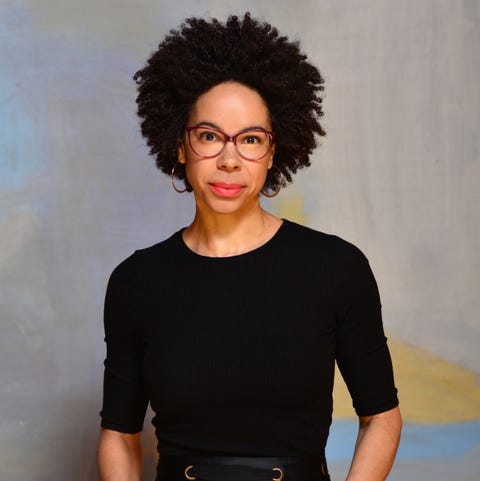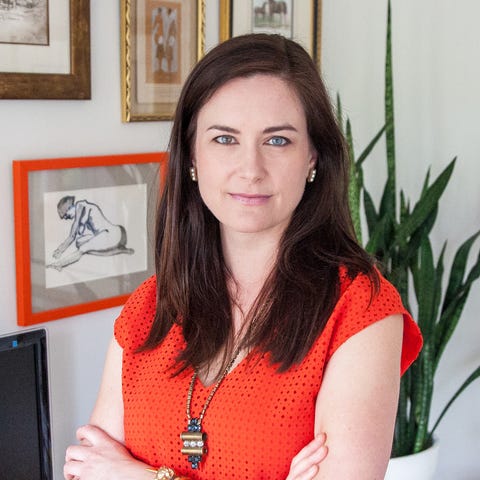Eunice Newton Foote rarely gets the credit she’s due. In 1856, she theorized that changes in carbon dioxide in the atmosphere could affect the Earth’s temperature, arriving at her breakthrough through
experimentation. With an air pump, two glass cylinders, and four thermometers, she tested the impact of “carbonic acid gas” (the term for carbon dioxide in her day) against “common air.” When placed in the sun, she found the cylinder with carbon dioxide trapped more heat and stayed hot longer. From this simple experiment, Foote connected the dots between carbon dioxide and planetary warming—and she did it more than 160 years ago.
Her paper, “Circumstances Affecting the Heat of Sun’s Rays,” was presented in August 1856 at a meeting of the American Association for the Advancement of Science and then published. That was three years before Irish physicist John Tyndall published his own more detailed work on heat-trapping gases, work typically credited as the foundation of climate science. Did Tyndall know about Foote’s research? It’s unclear, though he did have a paper on color blindness in the same issue of The American Journal of Science and Arts as hers. In any case, we have to wonder if Eunice Newton Foote ever found herself remarking, as so many women have: I literally just said that, dude.


Foote wasn’t only a scientist. She was involved in the early movement for women’s rights, too. Her name appears on the list of signatories to the 1848 Seneca Falls “Declaration of Sentiments”—a manifesto created during the first women’s rights convention in the United States—right below famed suffragist Elizabeth Cady Stanton. Faithful to both science and equality, Foote, it seems, was a climate feminist.
Climate feminism is exactly what we need, because our planetary crisis has never been gender neutral
Climate feminism is exactly what we need, because our planetary crisis has never been gender neutral. Climate change is a powerful “threat multiplier,” making existing vulnerabilities and injustices worse. Especially under conditions of poverty, women and girls face greaterrisk ofdisplacementor death from extreme weather disasters. Early marriage and sex work—sometimes last-resort survival strategies—have been tied to droughts and floods.
There is growing proof of the link between climate change and gender-based violence, including sexual assault, domestic abuse, and forced prostitution. Tasks core to survival, such as collecting water and wood or growing food, fall on female shoulders in many cultures. These are already challenging and time-consuming activities; climate change can deepen the burden, and with it struggles for health, education, and financial security. Such realities make gender-responsive strategies for climate resilience and adaptation critical. And they mean gender justice will be an unattainable dream without bold climate action.
All around the world, women and girls are making enormous contributions to the work of healing our planet: conducting research, cultivating solutions, creating campaign strategy, curating art exhibitions, crafting policy, composing literary works, charging forth in collective action, and more. Look around and you will see climate leadership that is more characteristically feminine and more faithfully feminist, rooted in compassion, connection, creativity, and collaboration.
But while women and girls are undeniably agents of change for the planet, they remain underrepresented in executive leadership of environmental organizations, United Nationsclimate negotiations, in media coverage of the crisis, and in the legal systemsthat create and uphold change. Girls and women leading on climate receive insufficient financial backing and too little credit as the dominant public voices and empowered “deciders” on the climate crisis continue to be white men.
More than a problem of bias, suppressing the participation of women and girls—half the world’s brainpower and change-making might—sets us up for failure. Research shows that women have an edge over men when it comes to the planet: they convey greater scientific knowledge of climate change than men and act onthat knowledge; they also have an aversion to taking on outsized risk or imposing it on others (something data indicates white men are particularly inclined to do).
This advantage carries into politics and policy making. Female legislators more strongly support environmental laws—and stricter laws at that. When parliaments have greater representation of women, they are more likely to ratify environmental treaties. When women participate equally with men, climate policy interventions are more effective. At a national level, higher political and social status for women correlates with lower carbon emissions and greater creation of protected land areas.
"Women leading on climate receive insufficient financial backing and too little credit as the dominant public voices and empowered 'deciders' on the climate crisis continue to be white men."
To address our climate emergency, we must rapidly, radically reshape society. We need every solution and every solver—as the saying goes, to change everything, we need everyone. What this moment calls for is a mosaic of voices—the full spectrum of ideas and insights for how we can turn things around. It calls for a feminist climate renaissance.
And yet for far too long, far too many leaders have been focused on profit, power, and prestige. The climate crisis is the result of social, political, and economic systems that are wildly skewed to benefit those who already have so much. It is the result of unfettered economic growth, extractive capitalism, and the concentration of wealth and power in the hands of a few, who have known plenty but cared too little and continue to block efforts for change. Humanity simply cannot survive the status quo, and neither can many other species and ecosystems.
To transform society this decade—the clear task science has set before us—we need transformational leadership. We need feminine and feminist climate leadership, which is wide open to people of any gender. This is where possibility lives—possibility that we can turn away from the brink and move toward a life-giving future for all.
What might Eunice Newton Foote have achieved if she had had John Tyndall’s access to training and resources, the same platform and power? We can only imagine. And while we cannot rewrite that chapter, we can hear, heed, and support climate feminists today. We can follow as they summon truth, courage, and solutions—the trifecta that can move us forward, through the aching uncertainty toward all we can save.
Drs. Wilkinson and Johnson are co-editors of All We Can Save, an anthology of writings by women climate leaders, and co-founders of The All We Can Save Project.


